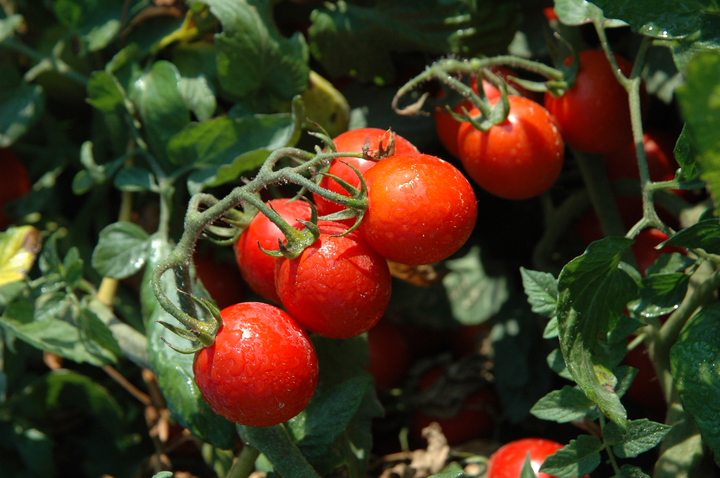Posted: December 21, 2018
Biocontrol has long been touted as a safer alternative to synthetic pesticides for both, farmworker safety and the environment. However, inconsistent efficacy has hampered its wide adoption for disease management. To address this issue, faculty at Penn State are leading a project, funded by the USDA Specialty Crop Multi-State Program. Their focus is on generating critical knowledge and resources needed to develop and deploy reliable biocontrol strategies that can help protect tomato production from Fusarium wilt, an increasingly problematic soilborne disease.
UNIVERSITY PARK, Pa. - Heavy reliance on pesticides to manage plant diseases has degraded the environment, negatively impacted human health and accelerated the emergence of pesticide resistance. A grant awarded by the 2018 USDA Specialty Crop Multi-State Program will allow Penn State faculty to develop and deploy reliable biocontrol strategies that can help protect tomato production.
Recipients of the grant consist of faculty members Terrence Bell, Beth Gugino, and Seogchan Kang in the Department of Plant Pathology and Environmental Microbiology at Penn State, as well as researchers and extension educators at University of Maryland and University of Florida.
Biocontrol has been promoted as an alternative to pesticides for decades, and the market for biocontrol products continues to grow. Biocontrol, as defined by the USDA National Institute of Food and Agriculture, is "the deliberate use of natural enemies - predators, parasites, pathogens, and competitors to suppress and maintain populations of a target pest species (insects, mites, weeds, plant pathogens, and other pest organisms)." The incorporation of biocontrol agents as part of an Integrated Pest Management (IPM) program should reduce grower reliance on synthetic pesticides and complement other farming practices such as crop rotation. However, inconsistent and unpredictable efficacy in different production systems and environments has limited the wide application of biocontrol.
"Until we can convincingly demonstrate that biocontrol can work as effectively as synthetic pesticides and return economic gains, biocontrol will continue to be perceived by risk-averse growers as a risky and high-cost practice," said Kang.
Relative to foliar diseases, soilborne diseases are much more difficult to control because they can become easily established in the soil and persist from season to season. For decades, pre-plant fumigation, using a combination of methyl bromide and chloropicrin, has been the most effective practice for managing soilborne diseases. However, since the loss of methyl bromide as a treatment option, in part due to its adverse effect on the Earth's ozone layer, growers have observed a reemergence of soilborne diseases such as Fusarium wilt. Therefore, identifying effective alternative strategies or combinations of strategies is important. Using multi-scale (metabolic/gene activities to organismal interactions) and multi-disciplinary (fungal genetics/genomics, chemical ecology, microbiome analysis, molecular imaging) approaches will enable the team to study both, how biocontrol works and why biocontrol fails and thus increase the likelihood of success both in terms of disease management and adoption by the growers.
"As articulated by Thomas Edison, 'I can never find the things that work best until I know the things that don't work,' without this understanding, biocontrol would continue to be like blindly shooting a target that is obstructed by a series of moving obstacles," said Kang. "We may occasionally hit the target, but we would not know what blocked the target in cases of failure and when it might be blocked again. Failure also provides insights that success may not offer and will guide us around the varied pitfalls that have caused previous failures."


